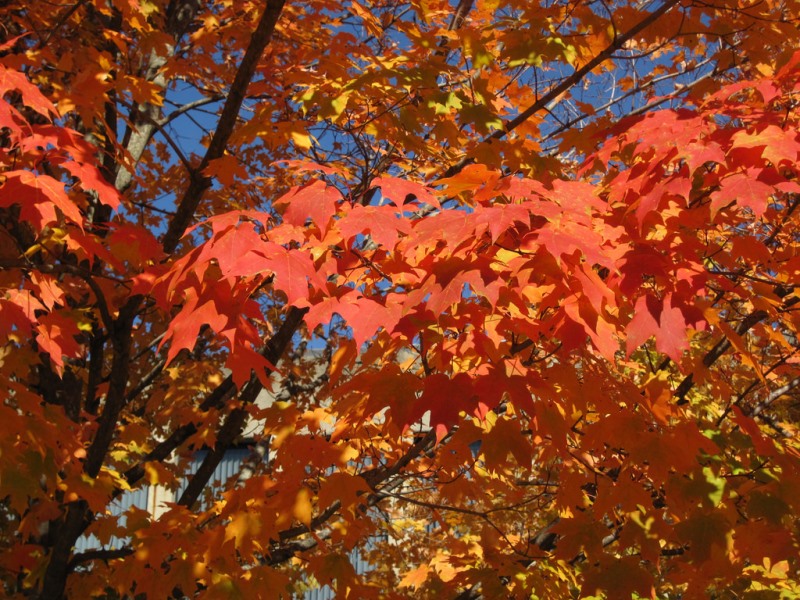Fall Colors of Indian Summer
While the locust and ash trees have now been totally stripped of their leaves and stand stark and barren to the skies of late October, the flowering crabs have just enough leaves left to conceal the bright red berries that are beginning to shrivel, attracting the various seed-eating birds - like cardinals, cedar waxwings and chickadees for instance - to those neighborhood trees.
But this year it is the maples that are putting on the best show, exploding like July fireworks into brilliant oranges and reds that can be seen everywhere, exclaiming the approach of winter. This time of year is a large part of the reason that I love Illinois and tolerate the bitter cold and snow that is just around the corner. The changing colors of the leaves is a reminder that the color - and amount - of light available for growth is changing as well.

Mother Nature has both subtle and not-so-subtle ways of reminding us that She is in control of the master plan. Birds arrive at the feeders in packs and feed furiously. Squirrels that have been spent most of their time in the trees are now scurrying this way and that, looking for additional places to bury a nut or two. Blackbirds are now seen in hoards, alternately hovering above the fields and then diving into them. And geese - perhaps the final sign of what is to come - are seen heading southward in fantastic arrow-shaped formations like Flying Fortresses on a mission. Days get quickly shorter and the air is rife with the dust of the bean and corn harvests.
We generally go about our business as we have for the last three months, putting off those last few distasteful chores until "next weekend". Yet suddenly and almost viciously, a distinct change in wind direction precedes a blast of Arctic air that will bring to a screaming halt any growing thing in the garden that has managed to survive until now. Not quite ready for this yet, we are now wondering if we have missed what has always been known as "Injun Summer" or if we will get one last reprieve...
One of my fondest memories from years past was the once-a-year article (written by John McCutcheon) that first appeared in the Chicago Tribune in 1907, telling the tale of how we know that it's Injun Summer. From the original article:
"Injun sperrits marchin' along an' dancin' in the sunlight. That's what makes that kind o' haze that's everywhere - it's jest the sperrits of the Injuns all come back. They're all around us now."
It colorfully and succinctly described a story told by an old man to a young boy... about fall and about he sights and smells of raking and burning leaves. It was one of my favorite articles -- read to me at first by my father before I could read. When I got older, I looked forward to reading it myself, every year, right before Halloween.
I don't recall when it stopped appearing; I imagine it was an issue of "political correctness"... And too, it is now against most local ordinances to burn leaves. It's really too bad, because that was one gentle reminder about getting ready for the next season, but in a way that we found a bit easier to take.

Halloween is right around the corner, followed by preparation for a feast to celebrate the harvest and be thankful for what we have. Soon, even the brightly-colored maples will also shed their colorful display, leaving only the stout oaks with leaves that won't drop until winter is once again only a memory. The swirling leaves and the sting of the wind brings back to me, even after many years without it, the memory of the smell of smoke in the air from burning leaves, a memory that means Injun Summer is here."


